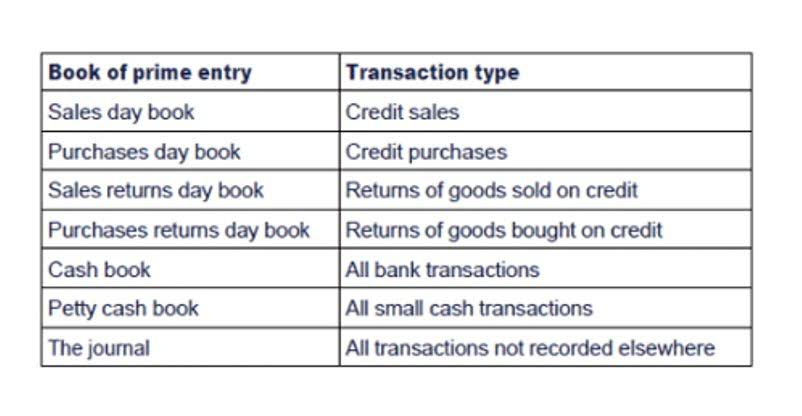Accrue vacation in Payroll
If they leave the company and we have to pay their unused vacation, this can turn into a cash outflow the business can’t handle. Vacation carryover refers to the policy that allows employees to transfer unused vacation time from one year to the next. This provides flexibility and ensures that workers do not lose their hard-earned leave if they cannot take it within a calendar year. To calculate PTO and vacation accruals for salaried employees, assume 2,080 working hours, 52 workweeks, and 365 workdays. This is because salaried employees are usually treated as if they work year-round, for the purposes of calculating time off.
Payroll Compliance Canada: A Small Business Guide

It’s governed by regulations at federal and provincial levels and is also subject to individual company policies that an employer chooses to put in place. From this perspective, if you’re an employer that’s invested in employee engagement and retention, you could see an increase in staff satisfaction thanks to vacation accrual. Staff don’t have to save as much, and they can look forward to receiving a lump sum payout when they finally book that well-earned break.
How to Add Payroll Time
20 U.S. states require companies to pay out an employee’s unused vacation or sick time at separation. Three states have banned use-it-or-lose-it policies, which means that unused vacation or sick leave (or both) must roll over to the next year, or be paid out at year’s end. The most common form of accrued pay is PTO or paid vacation time, which is simply paying regular wages during time spent on leave from work. Hourly accrued vacation meaning or fixed-paid (ex. salaried) employees are simply paid based on the fixed entitlement of PTO/vacation days in hours or days. For hourly workers, the current pay per day would be computed as the hourly compensation rate on the date of accrual multiplied by the total number of hours to be compensated for one day. The hourly compensation rate should include the related cost of fringe benefits and employer taxes earned.
- The employee receives an additional five hours of vacation time and used 10 hours during the month.
- A new employee might accrue vacation at a rate of 1.25 days per month, which translates to 15 days per year.
- Calculating vacation accrual is slightly different for full-time salaried employees, given that these employees are counting their time worked in days as opposed to hours.
- Remember that every state has laws regarding vacation accrual and how the hours must be paid.
- Instead, many of these employees are choosing to save accumulated and vested vacation and sick days for when travel restrictions are lifted.
Vacation Days and Unused Paid Leave Accrual
We can start by applying the salary growth percentages to the data we have, as we expect to settle the unused paid leave in the future at the increased compensation level. On an annual basis, the entity’s accounting department reviews the vacation accrual by benchmarking it to prior periods. They would also check the liability for accuracy and completeness and perform reasonability tests. IAS 19 provides guidance on the matter of accounting treatment for such benefits.
Two of the best words in the English language (aside from “paid vacation” that is). But while employees dream about pina coladas and hammocks, small business owners tend to view vacation time (and terms like vacation accrued) as yet another complicated task they need to take care of. In practice, a paid leave accrual calculation would start with obtaining a list of all employees, their gross salaries, and their balance of vacation days.

Vacation Accrual for Employees
The TOIL policy is a way of compensating employees for working overtime. Under this policy, employees are given an additional hour off for each extra hour they invest in work, up to a specific limit. This allows them to take time off later rather than being paid overtime wages. Leave time can be accrued in equal amounts every year or progressively – depending on the years of employment. With an equal leave policy, everyone gets the same amount of time off, regardless of how long they’ve been with the company.

Employers who provide PTO stay competitive in their efforts to attract top personnel. When creating a PTO policy, it is critical to consider both the requirements of the company and the employee. Make sure the policy is properly communicated and reviewed on a regular basis to ensure it fulfils the company’s needs. Following these suggestions can help you create an effective PTO policy. Employers choose to offer vacation accrual to make it easier for their employees to plan their vacations. Outside of any existing regulations, deciding whether to carry over vacation accrued into the following annual period is up to you as an employer.
- Here are a few different kinds of PTO that can factor into accrued vacation days and accrued pay.
- This is not a problem, so long as your employee understands that the vacation earned in dollars and hours accrue at different times.
- In this scenario, employees know they have a full year to plan a vacation and use up their vacation entitlement.
- Before you pass a journal entry, you’ll need to calculate the accrued vacation amount for each employee who has unused vacation days.
- Employers’ policies may provide for accumulated rights that carry forward to future periods if they are not used in the current period.
- Some employers choose not to accrue vacation pay at all, while others choose to accrue time, but not dollars.
What is Accrued Vacation Pay?

Asset Turnover Ratio: Formula, Examples, How to Improve It
The fixed asset turnover ratio and the working capital ratio are turnover ratios similar to the asset turnover ratio that are often used to calculate the efficiency of these asset classes. The ratio calculates the company’s net sales as a percentage http://bankmib.ru/markets/2012/10/3/ of its average total assets to show how many sales are generated from each dollar of the company’s assets. For instance, an asset turnover ratio interpretation of 1.5 would mean that each dollar of the company’s assets generates $1.5 in sales.
- It’s generating value with its assets, which can signal that it may be a solid investment.
- But even if your asset turnover ratio number isn’t where you want it to be, don’t worry—that number isn’t set in stone.
- A high ratio suggests efficient asset utilization, indicating that ABC Corporation effectively generates revenue relative to its asset base.
- Other business sectors like real estate normally take long periods of time to convert inventory into revenue.
- This is not considered good for the company because it indicates that the company’s total assets cannot produce enough revenue at the end of the accounting period (usually a year).
Part 2: Your Current Nest Egg
By adding the two asset values and then dividing by 2, you get the average value of the assets over the course of the year. This is then compared to the total annual sales or revenue, which can be found on the income statement. As an example, consider the difference between an internet company and a manufacturing http://portrait-photos.org/keywords/nature?skip=195 company. An internet company, such as Meta (formerly Facebook), has a significantly smaller fixed asset base than a manufacturing giant, such as Caterpillar. Clearly, in this example, Caterpillar’s fixed asset turnover ratio is of more relevance and should hold more weight than Meta’s FAT ratio.
Use of Asset Turnover Ratio Formula
If a company isn’t effective at generating sales with its assets, it most likely wouldn’t be a great investment — which, again, is important to know if you’re building an investment portfolio. Although having cash on hand is important for growing and maintaining a business, other types of business assets are also important, as is how a company chooses to use them. Liquid assets can include cash, stock, and anything else the company https://wekerle100.eu/tag/countries/ owns that could be easily liquidated into cash. Fixed assets are things the company owns that are not as easily turned into cash. As a quick example, the company’s A/R balance will grow from $20m in Year 0 to $30m by the end of Year 5. Companies with fewer assets on their balance sheet (e.g., software companies) tend to have higher ratios than companies with business models that require significant spending on assets.
How to calculate total asset turnover? Applying the total asset turnover ratio formula
If the asset turnover ratio of a company is less than 1, it is said to have a low ratio. This is not considered good for the company because it indicates that the company’s total assets cannot produce enough revenue at the end of the accounting period (usually a year). However, this interpretation and conclusion still depend on the average asset turnover ratio of the industry to which the company belongs. Therefore, there is no single benchmark all companies can use as their target fixed asset turnover ratio. Instead, companies should evaluate what the industry average is and what their competitor’s fixed asset turnover ratios are.
Asset Turnover Ratio: Definition
Asset turnover is a key figure for evaluating the efficiency with which a company uses its assets to generate income. Here we show you what asset turnover actually means, how it is calculated and what it indicates. Companies with cyclical sales may have worse ratios in slow periods, so the ratio should be looked at during several different time periods. Additionally, management could be outsourcing production to reduce reliance on assets and improve its FAT ratio, while still struggling to maintain stable cash flows and other business fundamentals.
Drawbacks of Asset Turnover Ratio in Stock Analysis
In other words, the company is generating 1 dollar of sales for every dollar invested in assets. A high asset turnover ratio indicates a company that is exceptionally effective at extracting a high level of revenue from a relatively low number of assets. As with other business metrics, the asset turnover ratio is most effective when used to compare different companies in the same industry. The asset turnover ratio tends to be higher for companies in certain sectors than others. Retail and consumer staples, for example, have relatively small asset bases but have high sales volume—thus, they have the highest average asset turnover ratio. Conversely, firms in sectors such as utilities and real estate have large asset bases and low asset turnover.
Formula for Calculating Asset Turnover Ratio
High turnover means that the company uses a small percentage of its assets each year to generate huge amounts of sales. However, it could be difficult to achieve high asset turnover if there are few assets to work with (for example, a company that manufactures custom clothes for each customer). This ratio may seem unnatural, but it is helpful when assessing how efficiently the assets of a business are being used. After all, the main reason for holding an asset is to help the company achieve a certain level of sales. In other words, Sally’s start up in not very efficient with its use of assets. To calculate the ratio in Year 1, we’ll divide Year 1 sales ($300m) by the average between the Year 0 and Year 1 total asset balances ($145m and $156m).
Asset Turnover Ratio
The ratio is commonly used as a metric in manufacturing industries that make substantial purchases of PP&E in order to increase output. When a company makes such significant purchases, wise investors closely monitor this ratio in subsequent years to see if the company’s new fixed assets reward it with increased sales. Understanding your Asset Turnover Ratio is crucial as it indicates how efficiently your business is using its assets to generate sales. It’s particularly vital for evaluating companies in capital-intensive industries where investments in assets are significant.
Ігрові автомати в Україні
Ігрові автомати в Україні стали популярним способом розваги для багатьох громадян. З розвитком технологій та інтернету, українці мають змогу насолоджуватись грою як у наземних казино, так і в онлайн-форматі. Ця стаття розповість про основні аспекти ігрових автоматів в Україні, їхню популярність та безпеку гри.
Історія ігрових автоматів в Україні
Ігрові автомати в Україні з’явились ще у 90-х роках, коли перші казино почали відкривати свої двері для відвідувачів. З часом, завдяки легалізації азартних ігор, ринок розвивався, і сьогодні гравці мають широкий вибір ігрових автоматів як в реальних закладах, так і на інтернет-платформах.
Онлайн-казино
Онлайн-казино стали невід’ємною частиною ігрової індустрії в Україні. Вони надають можливість грати в улюблені ігрові автомати з будь-якого куточка країни, використовуючи комп’ютери або мобільні пристрої. Основні переваги онлайн-казино включають зручність, широкий вибір ігор та бонусні пропозиції.
Безпека гри
Одним з важливих аспектів гри на ігрових автоматах в Україні є безпека. Для забезпечення захисту гравців, ліцензовані онлайн-казино використовують сучасні технології шифрування даних і пропонують відповідальну гру. Це гарантує чесність гри та захист персональних даних користувачів.
Популярні ігрові автомати
Серед популярних ігрових автоматів в Україні варто відзначити такі слоти як Book of Ra, Sizzling Hot, Mega Moolah та багато інших. Кожен з них має унікальні особливості, що приваблюють гравців своєю графікою, звуковим супроводом та можливістю виграти великі призи.
Перспективи розвитку
Ігрові автомати в Україні продовжують розвиватися завдяки зростанню популярності онлайн-казино та постійному вдосконаленню технологій. Це дозволяє гравцям отримувати ще більше задоволення від гри та насолоджуватися новими іграми, що з’являються на ринку.
Загалом, ігрові автомати в Україні є популярним способом розваги, що поєднує в собі адреналін від гри та можливість виграшу. Завдяки легалізації та розвитку технологій, гравці можуть насолоджуватись грою безпечно та зручно.

Схожі статті
-
Ігрові автомати на гроші в Україні
-
Ігрові автомати онлайн Україна
-
Ігрові автомати онлайн казино
-
Ігрові автомати грати онлайн
-
Ігрові автомати України на гроші
Ігрові автомати в Україні
Ігрові автомати в Україні стали популярним способом розваги для багатьох громадян. З розвитком технологій та інтернету, українці мають змогу насолоджуватись грою як у наземних казино, так і в онлайн-форматі. Ця стаття розповість про основні аспекти ігрових автоматів в Україні, їхню популярність та безпеку гри.
Історія ігрових автоматів в Україні
Ігрові автомати в Україні з’явились ще у 90-х роках, коли перші казино почали відкривати свої двері для відвідувачів. З часом, завдяки легалізації азартних ігор, ринок розвивався, і сьогодні гравці мають широкий вибір ігрових автоматів як в реальних закладах, так і на інтернет-платформах.
Онлайн-казино
Онлайн-казино стали невід’ємною частиною ігрової індустрії в Україні. Вони надають можливість грати в улюблені ігрові автомати з будь-якого куточка країни, використовуючи комп’ютери або мобільні пристрої. Основні переваги онлайн-казино включають зручність, широкий вибір ігор та бонусні пропозиції.
Безпека гри
Одним з важливих аспектів гри на ігрових автоматах в Україні є безпека. Для забезпечення захисту гравців, ліцензовані онлайн-казино використовують сучасні технології шифрування даних і пропонують відповідальну гру. Це гарантує чесність гри та захист персональних даних користувачів.
Популярні ігрові автомати
Серед популярних ігрових автоматів в Україні варто відзначити такі слоти як Book of Ra, Sizzling Hot, Mega Moolah та багато інших. Кожен з них має унікальні особливості, що приваблюють гравців своєю графікою, звуковим супроводом та можливістю виграти великі призи.
Перспективи розвитку
Ігрові автомати в Україні продовжують розвиватися завдяки зростанню популярності онлайн-казино та постійному вдосконаленню технологій. Це дозволяє гравцям отримувати ще більше задоволення від гри та насолоджуватися новими іграми, що з’являються на ринку.
Загалом, ігрові автомати в Україні є популярним способом розваги, що поєднує в собі адреналін від гри та можливість виграшу. Завдяки легалізації та розвитку технологій, гравці можуть насолоджуватись грою безпечно та зручно.

Схожі статті
Ігрові автомати в Україні
Ігрові автомати в Україні стали популярним способом розваги для багатьох громадян. З розвитком технологій та інтернету, українці мають змогу насолоджуватись грою як у наземних казино, так і в онлайн-форматі. Ця стаття розповість про основні аспекти ігрових автоматів в Україні, їхню популярність та безпеку гри.
Історія ігрових автоматів в Україні
Ігрові автомати в Україні з’явились ще у 90-х роках, коли перші казино почали відкривати свої двері для відвідувачів. З часом, завдяки легалізації азартних ігор, ринок розвивався, і сьогодні гравці мають широкий вибір ігрових автоматів як в реальних закладах, так і на інтернет-платформах.
Онлайн-казино
Онлайн-казино стали невід’ємною частиною ігрової індустрії в Україні. Вони надають можливість грати в улюблені ігрові автомати з будь-якого куточка країни, використовуючи комп’ютери або мобільні пристрої. Основні переваги онлайн-казино включають зручність, широкий вибір ігор та бонусні пропозиції.
Безпека гри
Одним з важливих аспектів гри на ігрових автоматах в Україні є безпека. Для забезпечення захисту гравців, ліцензовані онлайн-казино використовують сучасні технології шифрування даних і пропонують відповідальну гру. Це гарантує чесність гри та захист персональних даних користувачів.
Популярні ігрові автомати
Серед популярних ігрових автоматів в Україні варто відзначити такі слоти як Book of Ra, Sizzling Hot, Mega Moolah та багато інших. Кожен з них має унікальні особливості, що приваблюють гравців своєю графікою, звуковим супроводом та можливістю виграти великі призи.
Перспективи розвитку
Ігрові автомати в Україні продовжують розвиватися завдяки зростанню популярності онлайн-казино та постійному вдосконаленню технологій. Це дозволяє гравцям отримувати ще більше задоволення від гри та насолоджуватися новими іграми, що з’являються на ринку.
Загалом, ігрові автомати в Україні є популярним способом розваги, що поєднує в собі адреналін від гри та можливість виграшу. Завдяки легалізації та розвитку технологій, гравці можуть насолоджуватись грою безпечно та зручно.




